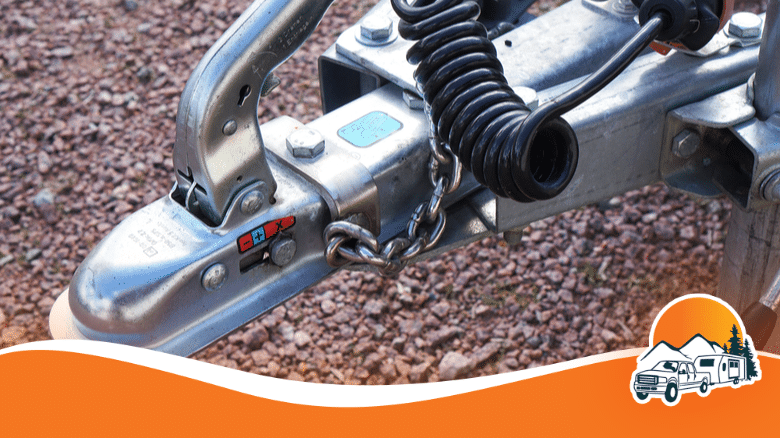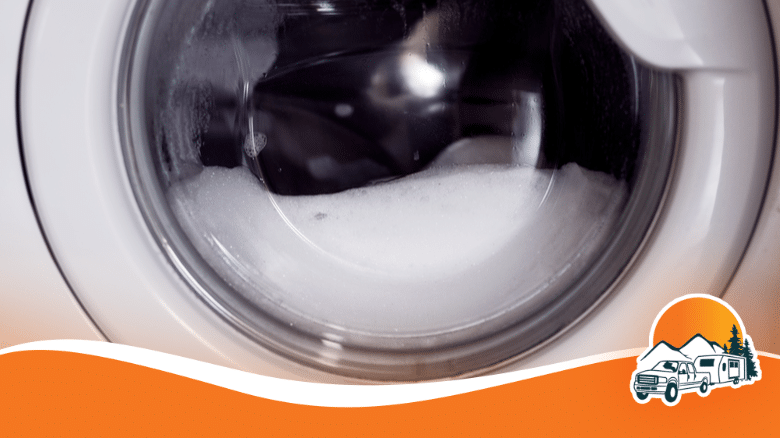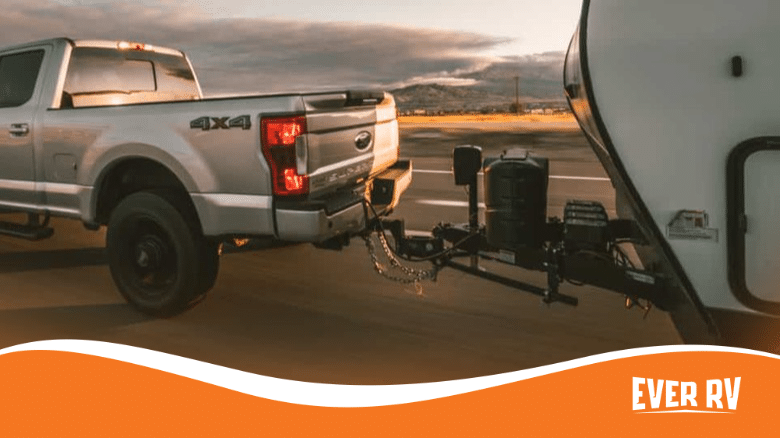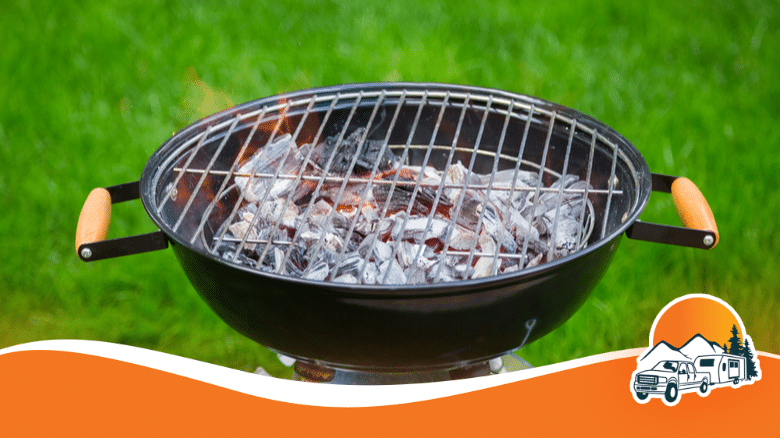When towing a trailer, it’s essential to consider the stability and safety of your towing setup. One important aspect to look into is a weight distribution hitch.

With a multitude of options available in the market, the question arises: Do you need a weight distribution hitch?
A weight distribution hitch evenly distributes the weight across the entire towing setup, ensuring a smoother and safer ride. It helps in reducing sway, maintaining a level ride, and improving overall handling while towing.
- Understanding Weight Distribution Hitch
- Components of a Weight Distribution Hitch
- Different Types of Weight Distribution Hitch
- Benefits of a Weight Distribution Hitch
- Do You Need a Weight Distribution Hitch?
- How to Choose the Right Weight Distribution Hitch
- Installation of a Weight Distribution Hitch
- Recommendations and Expert Opinions
- Frequently Asked Questions
However, not everyone may need this additional equipment. It depends on your specific towing requirements, the type of trailer, and the towing vehicle.
Key Takeaways
- A weight distribution hitch creates a stable and safe towing experience by evenly distributing weight.
- The necessity of a weight distribution hitch depends on various factors specific to one’s towing setup.
- There are different types of weight distribution hitches available, so choosing the right one is crucial for optimal performance.
Understanding Weight Distribution Hitch
A weight distribution hitch helps ensure that your towing experience is safe and controlled. When you tow a heavy load, the trailer’s weight can cause the back of your tow vehicle to sag, affecting your driving performance and reducing safety on the road. By distributing the trailer’s weight evenly across both axles of the tow vehicle, a weight distribution hitch provides a more stable and level ride.
When deciding if you need a weight distribution hitch, consider the fit and the type of control it offers. It is essential to choose the right one specific to your tow vehicle and trailer combination. To determine the correct fit, you need to know the Gross Trailer Weight (GTW) and the Tongue Weight (TW) of your trailer. These values can be found in your owner’s manual or through the manufacturer’s specifications.
Once you’ve determined the required specifications, you can choose a weight distribution hitch that offers the necessary control features. There are many types available, such as those with sway control, which can help prevent trailer sway during towing. The right distribution hitch will not only make towing safer and more comfortable but also extend the life of your vehicle by reducing stress on its components.
In summary, a weight distribution hitch is an important accessory for safe and controlled towing. To determine if you need one and the right fit, consider your trailer’s Gross Trailer Weight and Tongue Weight, as well as the desired control features. By selecting the appropriate device for your setup, you can ensure a smooth and secure towing experience.
Components of a Weight Distribution Hitch
A weight distribution hitch is a vital towing accessory that helps distribute the trailer’s weight evenly across the tow vehicle and the trailer. In this section, we’ll discuss the major components of a weight distribution hitch.
There are five primary components that work together in a weight distribution hitch:
- Hitch Head: The hitch head is the central component that connects the shank to the other parts of the hitch, allowing smooth towing. It serves as the attachment point for the spring bars and the brackets.
- Shank: The shank is the solid metal piece that slides into the tow vehicle’s receiver hitch. It provides sturdy support for the hitch head and is crucial for transferring the weight evenly.
- Spring Bars: Spring bars are crucial for distributing the weight across the system. They connect the hitch head to the brackets mounted on the trailer’s frame, acting as tension-inducing levers. Spring bars come in different sizes and styles, each rated for specific weight capacities.
- Brackets: The brackets attach to the trailer’s frame, serving as attachment points for the spring bars. They play a key role in weight distribution by maintaining tension in the system when engaged.
- Hitch Receiver: Your tow vehicle must have a hitch receiver to accommodate the weight distribution hitch. The hitch receiver is where the shank is inserted, securely connecting the tow vehicle to the hitch assembly.
When assembled properly, these components create a solid connection between your tow vehicle and trailer, ensuring that the weight of your trailer is evenly distributed. This results in improved stability, control, and increased safety while towing. Remember to choose a hitch with the appropriate weight capacities for your specific towing situation and always follow the manufacturer’s guidelines for safe and effective use.
Different Types of Weight Distribution Hitch
When it comes to weight distribution hitches, there are two popular types that you should be familiar with: the round bar hitch and the trunnion bar hitch.
The round bar hitch is a common choice among people who tow lighter loads. This type of hitch uses curved spring bars that are mounted onto a trailer’s tongue and attached to chains. By adjusting the chains’ tension, you can effectively distribute the weight across the entire tow vehicle and trailer. The round bar hitch is relatively affordable, easy to install, and offers good performance for lighter towing jobs.
On the other hand, the trunnion bar hitch is heavier duty and more suitable for heavier loads. As opposed to the round bars, trunnion bars are square and solid, which means that they can handle more weight. These hitches also feature adjustable tension, but instead of chains, they use brackets mounted to the trailer frame. Trunnion bar hitches are more robust and can handle a greater weight distribution. They are, however, more expensive than round bar hitches and can be slightly more difficult to set up.
Both types of weight distribution hitches offer advantages depending on your towing needs. Consider your vehicle, the weight of your trailer, and your towing frequency when choosing between a round bar and trunnion bar hitch. With the right hitch, you can ensure a smooth and safe towing experience.
Benefits of a Weight Distribution Hitch
Safety and Control
A weight distribution hitch can greatly enhance your driving safety by providing better control over your towing vehicle and trailer. This type of hitch works to evenly distribute the trailer’s tongue weight across your tow vehicle’s axles, resulting in improved steering and trailer control. Moreover, it also reduces trailer sway and enhances sway control, ensuring a safe and smooth trip on the road.
Even Weight Distribution
The primary purpose of a weight distribution hitch is to distribute the trailer’s weight evenly across your towing vehicle’s axles. By balancing the weight distribution, you can prevent issues such as sagging or uneven tire wear. An even distribution of weight reduces stress on the vehicle and improves overall stability, providing a more comfortable towing experience.
Improved Towing Capacity
Using a weight distribution hitch can also increase your towing capacity. When the trailer’s weight is evenly distributed across the tow vehicle’s axles, the vehicle’s suspension can better support the load. This means you can safely tow larger or heavier trailers within your vehicle’s towing capacity limits.
Ground Clearance
Another benefit of using a weight distribution hitch is the increased ground clearance it provides. The hitch’s design helps to counter any sagging that may occur between the tow vehicle and the trailer. By lifting the trailer tongue and redistributing the weight more evenly, the hitch ensures adequate ground clearance for both your vehicle and the trailer.
Braking Power
Lastly, a weight distribution hitch can improve your braking power. With the trailer’s weight evenly distributed, there’s less force on the tow vehicle’s rear axle, allowing the brakes to work more efficiently. This translates to shorter stopping distances and reduced risk of accidents, especially when towing heavy loads.
Do You Need a Weight Distribution Hitch?
A weight distribution hitch can be an essential component when towing an RV or a trailer. It helps you maintain control and stability, especially when facing challenges like wind or uneven road surfaces. When deciding whether you need a weight distribution hitch, consider the following factors:
- Towing capacity: The towing capacity of your vehicle determines how much weight you can pull. If you are towing a trailer or an RV that is close to or exceeds your vehicle’s towing capacity, using a weight distribution hitch is essential. It will help distribute the weight more evenly on your vehicle’s tires and improve overall towing performance.
- Gross trailer weight: Evaluate the gross trailer weight (GTW) by adding the total weight of the trailer, including all its contents and the weight of the vehicle it is attached to. If the GTW is more than 50% of your vehicle’s towing capacity, it’s recommended to use a weight distribution hitch.
- Wind: High winds can lead to a loss of balance and control while towing a trailer. A weight distribution hitch helps to maintain stability and improve overall towing safety in these conditions.
- Level towing: For a safe and comfortable tow, it’s important to ensure that both your vehicle and the trailer are level. A weight distribution hitch helps maintain a level towing set-up by distributing the trailer’s weight more evenly across the hitch, reducing the risk of trailer sway and allowing for a smoother ride.
When assessing the need for a weight distribution hitch, always consider your specific vehicle, trailer, and towing requirements. You may find that a weight distribution hitch is not necessary for a lighter, smaller trailer, but crucial for maintaining control, stability, and safety with a larger, heavier RV or trailer.
How to Choose the Right Weight Distribution Hitch
When selecting the right weight distribution hitch for your towing needs, there are several factors to consider. First, determine the total weight of your trailer, including the weight of everything loaded inside it. This is known as the Gross Trailer Weight (GTW). Next, find the tongue weight, which is the amount of the trailer’s weight pressing down on the hitch ball.
To select the proper hitch, consider your vehicle’s towing capacity — the maximum weight it can tow — and ensure the GTW and tongue weight are within its limits. Manufacturers provide the towing capacity in your vehicle owner’s manual.
There are two main types of weight distribution hitches available: trunnion bar and round bar. Both systems help to distribute the weight evenly, but they function differently. Trunnion bars attach directly to the hitch head and usually offer better ground clearance. Round bars, on the other hand, slide into the hitch head and provide flexibility to move more freely.
When researching products, look for a hitch with the appropriate GTW and tongue weight capacity. A hitch that offers a range of tongue weight adjustment is ideal, as you can fine-tune it to match the weight of your loaded trailer. Additionally, consider models that include anti-sway control, which helps to reduce side-to-side movement and improve stability while towing.
Choose a hitch from a reputable manufacturer for a reliable and durable solution. Read customer reviews and ask for recommendations from other trailer owners to gain insights into the best products on the market.
Installation of a Weight Distribution Hitch
Before starting the installation, gather all required tools and make sure you have a clear, level surface to work on. Remember, safety first.
First, attach the hitch ball to the weight distribution hitch head. To do this, you’ll need to insert the hitch ball into the hole on the hitch head and then tighten the nut securely using a wrench.
Next, position the hitch head on the shank, ensuring it’s at an appropriate height to connect to your trailer’s coupler. It’s essential to have the correct measurements for your specific towing setup. Adjust the tilt of the hitch head as needed, then lock it in place with bolts and nuts.
Connect the hookup brackets to the trailer’s frame, making sure they’re evenly spaced from the coupler. The brackets hold the spring arms, which help distribute the weight evenly on the hitch. Keep in mind that the location of the brackets may affect the performance of the weight distribution system.
Now, it’s time to attach the spring arms. Ensure the trailer and tow vehicle are leveled, and then insert the ends of each spring arm into the hitch head. Once both spring arms are in place, use retaining pins to secure them.
Attach the trailer coupler to the hitch ball and then latch it securely. Make sure the safety chains and breakaway cable are properly connected between the tow vehicle and the trailer.
Finally, with the coupler and the hitch ball connected, use the weight distribution system’s lift tool to raise the trailer and tow vehicle connection point. This will create more clearance and allow you to secure the spring arms into the hookup brackets. Complete the process by inserting the safety pin to keep the spring arms secured.
After completing these steps, evaluate your setup and make any necessary adjustments. The weight distribution system should be level and functional at this point. Remember, periodic checks and adjustments are vital to maintaining a safe and efficient towing experience.
Recommendations and Expert Opinions
When considering if you need a weight distribution hitch, it’s essential to gather information from various sources. Real experts in the industry provide valuable insights and can help you make an informed decision. Here are a few points to consider based on recommendations and expert opinions:
- Consult the experts: Reach out to professionals in the field, such as mechanics or towing service providers, to gather advice specific to your needs. They can assess your towing setup and guide you on whether a weight distribution hitch is necessary for your situation.
- Seek answers from others: Talk to your neighbors, friends, or other people who frequently tow vehicles to get their opinions and experiences. They may have used a weight distribution hitch and can provide first-hand information on its benefits and drawbacks.
- Customer reviews: Browse through customer reviews on retailers’ websites or online forums to gauge the performance of various weight distribution hitch models. This will give you an idea of what to expect from the product in terms of reliability, durability, and ease of use.
- Choose appropriately: Keep in mind that not every towing setup requires a weight distribution hitch. Assess your vehicle, trailer, and overall weight distribution to determine if a hitch would improve your towing experience. Remember, the goal is to create a level ride and maintain control while towing.
By incorporating these recommendations and expert opinions, you can confidently decide whether or not a weight distribution hitch is necessary for your towing needs.
Frequently Asked Questions
At what point is a weight distribution hitch necessary?
A weight distribution hitch becomes necessary when your trailer’s tongue weight is more than 10% of your tow vehicle’s total weight. It helps distribute the weight evenly, improving control and stability while towing. Make sure to check your vehicle’s towing capacity and manual for specific recommendations.
Can I tow without a weight distribution hitch?
Yes, you can tow without a weight distribution hitch, but it’s not recommended for heavily loaded trailers. If your trailer’s weight is within the safe towing capacity of your vehicle and the tongue weight is relatively low, you should be able to tow without a hitch. However, for optimal safety and stability, it’s better to have a weight distribution hitch in place.
How does a weight distribution hitch work?
A weight distribution hitch works by redistributing the weight of the trailer more evenly across your vehicle’s axles. This is done using a set of spring bars, which connect to the trailer’s tongue and the tow vehicle’s frame. By applying tension at specific points, the hitch transfers the weight and increases stability on the road.
Does a weight distribution hitch reduce sway?
Yes, a weight distribution hitch can help reduce sway, since it provides better weight distribution and stability. While a hitch alone may not eliminate sway entirely, it can make a significant difference in improving the overall towing experience by minimizing the risk of dangerous swaying movements.
Do you need both a weight distribution hitch and sway bar?
A weight distribution hitch can improve stability while towing, but in certain scenarios, a sway bar may be necessary to provide additional sway control. If you frequently tow in windy conditions, on rough terrain, or with a trailer prone to sway, you might want to consider a sway bar in addition to a weight distribution hitch.
How to install a weight distribution hitch?
- Make sure your tow vehicle and trailer are level and properly connected.
- Identify the correct weight rating for your hitch components (spring bars, hitch head, shank, etc.)
- Install the hitch head with the appropriate angle and height by securing it to the shank.
- Attach the spring bars to the hitch head and the trailer brackets.
- Adjust the tension of the spring bars evenly according to the manufacturer’s recommendations.
- Test your setup by towing the trailer to ensure everything is properly adjusted and secure.
Remember to always consult your hitch’s instruction manual and your vehicle’s towing guidelines for the most accurate information and optimal safety.







